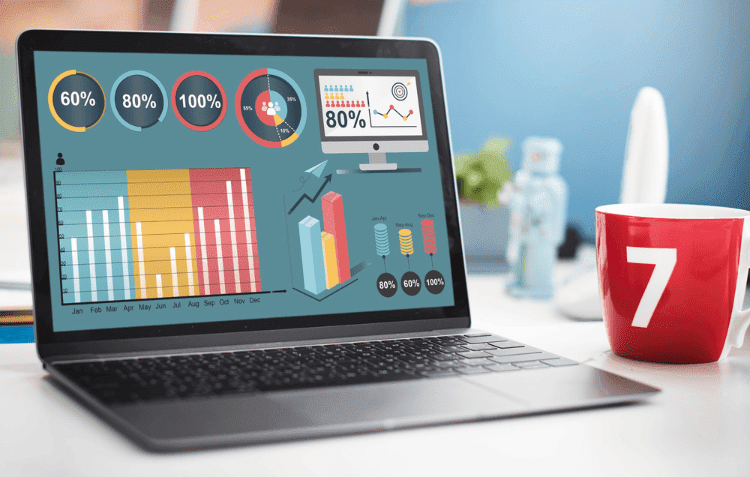How Many Leads Do You Need to Sale One Successfully?
How many leads do you need to sale one? It’s a question that keeps many sales and marketing professionals on their toes. According to a study by HubSpot, the average lead-to-sale conversion rate across industries hovers around 2.6%. This means a business often needs dozens of leads just to secure one successful sale.
Understanding your lead-to-sale ratio is not just a numbers game—it’s a critical metric for optimizing your sales process. It helps you evaluate the quality of your leads, the efficiency of your sales funnel, and the overall performance of your marketing strategies. Without this insight, businesses risk overspending on unproductive efforts or failing to meet revenue goals.
This article dives deep into the factors that influence lead-to-sale conversion rates, how to calculate the number of leads you need to make one sale, and actionable strategies to improve your conversion efficiency. Let’s explore how you can turn more leads into loyal customers.
Understanding Lead-to-Sale Conversion Rates
The lead-to-sale conversion rate is a critical metric for evaluating the effectiveness of your sales funnel. It measures how many potential customers (leads) turn into actual buyers, providing valuable insights into business performance.
What Is a Lead-to-Sale Conversion Rate?
A lead-to-sale conversion rate refers to the percentage of leads that result in a successful sale. It is calculated by dividing the number of sales by the total number of leads and multiplying by 100. For example, if a business generates 200 leads in a month and closes 10 sales, its conversion rate is 5%.
Why Is It Crucial for Businesses?
This metric helps businesses understand the quality of their leads and the effectiveness of their sales processes. A strong conversion rate signals that your marketing and sales teams are targeting the right audience and efficiently nurturing prospects. Without tracking this metric, companies risk wasting resources on unproductive strategies or misjudging their revenue potential.
Industry Averages to Benchmark
Conversion rates vary by industry. Here are some examples based on WordStream’s findings:
- E-commerce: ~2.5%
- Finance & Insurance: ~10%
- Healthcare: ~3.6%
- B2B (Business-to-Business): ~2%
The average lead-to-sale conversion rate across all industries is approximately 2.6%, providing a helpful baseline for comparison.
Real-World Application
Imagine an e-commerce store with a 2.5% conversion rate. If it attracts 1,000 leads, it can expect around 25 sales. Understanding this enables the business to set realistic goals and refine its approach to improve results.
Factors Influencing Conversion Rates

Conversion rates are shaped by multiple internal and external factors. Understanding these helps businesses optimize their approach and boost results.
1. Lead Quality
Not all leads are created equal. High-quality leads—those genuinely interested in your product or service and aligned with your target audience—are more likely to convert. For example, a business selling luxury watches will see better conversion rates by targeting affluent consumers rather than the general public.
2. Sales Process Efficiency
An organized and efficient sales process ensures leads move smoothly through the funnel. Factors like prompt follow-ups, personalized communication, and using CRM tools can significantly improve conversion rates. A clunky or delayed process, on the other hand, often leads to lost opportunities.
3. Perceived Value of Product/Service
The way potential buyers perceive your product’s value directly impacts their decision to purchase. Clear communication of benefits, testimonials, and competitive pricing can make a big difference. For instance, a SaaS company that highlights cost savings and productivity benefits is more likely to convert hesitant leads.
4. Market Conditions
External factors like economic trends, industry competition, and seasonal demand can affect conversion rates. For instance, during a recession, consumers may be more cautious with spending, requiring businesses to adjust their strategies accordingly.
By identifying and optimizing these factors, businesses can significantly improve their lead-to-sale ratios.
Calculating the Number of Leads Needed for One Sale
Knowing how many leads you need to generate a single sale helps in setting realistic sales targets and planning effective marketing campaigns.
How Many Leads Do You Need to Sale One?
Understanding how many leads are necessary to close one sale starts with knowing your conversion rate. For instance, with a 2.6% conversion rate, you’d need approximately 39 leads for one sale. This formula simplifies planning and allows businesses to set realistic lead generation goals.
Basic Formula
The formula to calculate the number of leads required for one sale is straightforward:
Number of Leads Needed = 1 / Conversion Rate
Example Calculation
Let’s say your business has a conversion rate of 2.6%. Plugging this into the formula:
1 / 0.026 ≈ 38.5 leads
This means you would need approximately 39 leads to secure one sale.
Why This Calculation Matters
Understanding this number allows businesses to estimate the scale of their marketing efforts. For example, if your goal is 10 sales per month, you’ll need around 390 leads. By improving your conversion rate through better strategies, you can lower the required number of leads and increase efficiency.
Strategies to Improve Lead Conversion Rates

Boosting lead-to-sale conversion rates requires a combination of targeted strategies that address different stages of the sales funnel. Here’s how businesses can optimize their approach to achieve better results.
1. Identifying the Right Leads
Explanation: Not all leads are equally likely to convert. Focusing on the right audience increases efficiency and reduces wasted effort.
Strategy: Implement lead scoring systems to rank prospects based on criteria like engagement, demographics, and behavior. Tools like HubSpot or Salesforce can help prioritize high-value leads. For example, prioritize leads who interact with multiple touchpoints, such as downloading resources or attending webinars.
2. Optimizing Landing Pages
Explanation: Landing pages are often the first touchpoint for potential customers. A poorly designed page can cause high bounce rates, lowering conversion potential.
Strategy: Follow best practices like clear headlines, concise copy, a single call-to-action (CTA), and fast load times. Use A/B testing to refine design elements. For instance, adding trust badges or highlighting benefits can significantly improve conversion rates.
3. Personalized Communication
Explanation: Personalization builds trust and engages leads on a deeper level, making them more likely to move forward.
Strategy: Use personalized email marketing campaigns. Address recipients by name and tailor content based on their interests or actions. For example, send a follow-up email referencing a webinar they attended or a product they viewed.
4. Prompt Follow-Up
Explanation: A delayed response to leads often results in lost opportunities. Speed is critical in converting warm leads.
Strategy: Implement automated follow-up systems to ensure timely communication. Tools like ActiveCampaign or Zapier can send instant emails or alerts to sales reps. For example, following up within five minutes of lead generation can dramatically increase conversion chances.
5. Leveraging Social Proof
Explanation: Testimonials, reviews, and case studies build credibility and help potential customers trust your business.
Strategy: Display customer testimonials prominently on your website and marketing materials. Video testimonials or success stories can be particularly compelling. For instance, feature a short case study showing how your product solved a specific problem for a customer.
By combining these strategies, businesses can create a robust framework to nurture leads effectively, improve engagement, and ultimately increase their lead-to-sale conversion rates.
Case Studies: Successful Lead Conversion
Real-world examples illustrate how strategic changes can dramatically improve lead-to-sale conversion rates. Here are two cases highlighting challenges, solutions, and outcomes.
Case Study 1: A B2B Software Firm
Company: A mid-sized SaaS company specializing in project management tools.
Challenge: Despite generating a steady stream of leads, the company struggled with a low conversion rate. Many leads were unqualified or disengaged, leading to wasted sales efforts.
Solution: The firm introduced a lead scoring system to rank prospects based on their likelihood to convert. Criteria included website activity, engagement with marketing emails, and responses to surveys. Additionally, they launched personalized email campaigns tailored to lead behavior. For example, if a prospect downloaded a whitepaper, they received a follow-up email offering a demo of the tool.
Result: Within six months, the company reported a 15% increase in their lead-to-sale conversion rate. By focusing on qualified leads and delivering relevant communication, they reduced the sales cycle and improved efficiency.
Case Study 2: An E-Commerce Retailer
Company: A popular online retailer selling home goods.
Challenge: The retailer faced high cart abandonment rates, losing potential customers at the final stage of the purchase process. Customer feedback indicated concerns about trust and payment security.
Solution: The Company optimized its checkout process, simplifying form fields, offering multiple payment options, and ensuring mobile-friendliness. They also added customer testimonials and product reviews directly on product pages and during checkout to build trust.
Result: These changes led to a 20% increase in sales within three months. Testimonials reassured hesitant buyers, and a smoother checkout experience encouraged completion.
These success stories demonstrate the power of data-driven strategies and customer-centric approaches in improving lead conversion rates. Businesses can achieve significant growth by identifying challenges, tailoring solutions, and continuously optimizing processes.
Final Thoughts
Understanding and improving lead-to-sale conversion rates is essential for sustained business growth. By examining the factors that influence conversion—such as lead quality, sales processes, and market conditions—you can better identify opportunities for improvement. Calculating how many leads you need per sale offers valuable insights into setting realistic goals and optimizing your sales pipeline.
The case studies and strategies discussed in this article highlight the importance of targeting the right audience, personalizing communication, leveraging social proof, and acting promptly. These steps not only increase your chances of converting leads but also improve customer satisfaction and loyalty.
Take actionable steps today: analyze your current conversion rates, identify bottlenecks, and implement data-driven strategies to optimize performance. Remember, even small changes, such as improving your landing pages or follow-up processes, can lead to significant results. Success lies in consistently refining your approach and aligning efforts with your audience’s needs.
FAQs
What is the lead to sales ratio?
The lead-to-sales ratio, also known as the lead conversion rate, measures the percentage of leads that become paying customers. It’s calculated by dividing the number of converted leads by the total number of leads and multiplying by 100.
How many leads should I get per day?
The ideal number of daily leads varies by industry and business size. On average, organizations generate about 1,877 leads monthly, equating to approximately 62 leads per day.
How do you calculate lead to sales?
Calculate the lead-to-sales conversion rate by dividing the number of sales by the total number of leads, then multiplying by 100 to get a percentage. For example, if you have 50 sales from 1,000 leads, the conversion rate is (50/1,000) × 100 = 5%.
What is a good selling ratio?
A “good” selling ratio varies by industry. Generally, a lead-to-customer conversion rate between 2% to 5% is considered average, while rates above 5% are viewed as strong. However, industry standards differ, so it’s essential to benchmark against peers.
How to estimate the number of leads?
Estimate the number of leads needed by dividing your sales target by your average lead-to-sales conversion rate. For instance, to achieve 100 sales with a 5% conversion rate, you’d need 2,000 leads (100 / 0.05).







